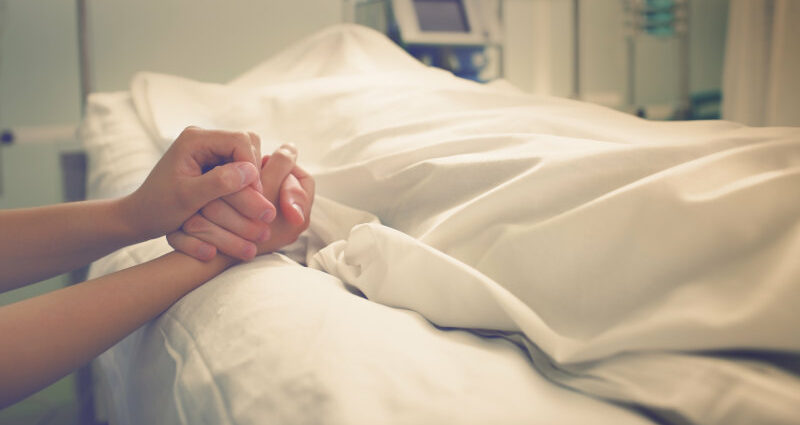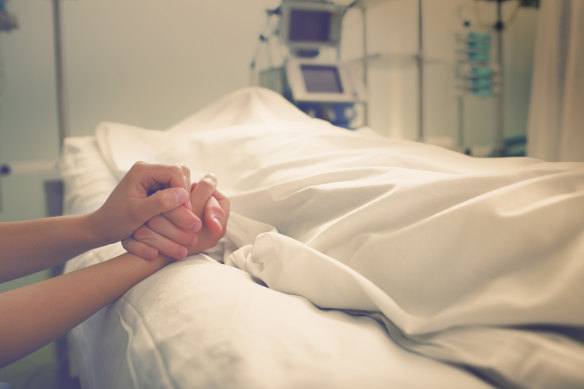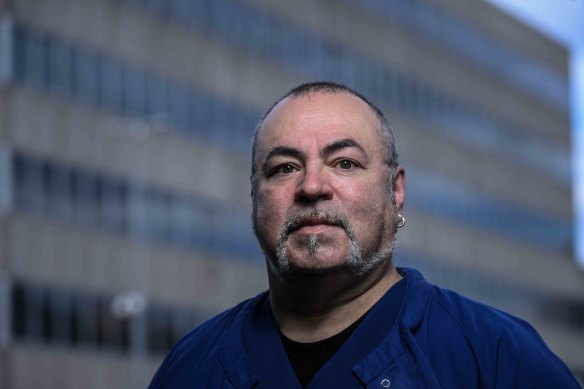Save articles for later
Add articles to your saved list and come back to them any time.
At least 659 Victorians have died after catching COVID-19 while being treated for other conditions in hospitals, with doctors warning that patients are delaying care over infection fears.
Health Department data obtained under freedom of information laws reveals 5614 people were suspected to have caught COVID while in the state’s public hospitals between 2020 and April this year.
Hundreds of Victorians have died after catching COVID in hospitals.Credit: Shutterstock
More than one in 10 of these patients were confirmed or suspected to have died as a result of their hospital-acquired infection.
The revelation came after the state’s health safety watchdog dropped a requirement for health services to notify it of hospital-acquired COVID-19 infections that result in serious harm or death. These cases are now reviewed internally.
Australian Medical Association Victorian president Jill Tomlinson said people admitted to hospital were at higher risk of serious illness and death from COVID-19 than the general public because they were often older and had other conditions, which might include a weakened immune system, lung and heart problems, diabetes or obesity.
“There needs to be broad recognition in our community that some people are more susceptible to COVID,” she said. “For some people, a COVID infection can be a death sentence.”
Tomlinson said while life had returned to normal for most Victorians, some people feared going to hospitals and medical practices because of the risk of catching COVID.
“I am concerned that people are not seeking medical care that is necessary,” she said.
Andrew Hewat, executive officer of the Victorian Allied Health Professionals Association, labelled the deaths a tragedy.
“It’s an embarrassment and a liability,” he said. “[Hospitals] are creating an environment where they are not protecting patients and their staff.”
Hewat called for greater consistency around infection control measures, saying many hospitals were downgrading their mask requirements and then stepping them up again following an outbreak.
“Then it’s too late. People have been infected,” he said. “It makes no sense to remove that layer of protection.”
Last week, Monash Health became the latest health service to scrap its requirement for emergency department staff to wear N95 masks. Workers must now wear surgical masks, which offer less protection, unless they are treating someone suspected to be infected with COVID-19. On Wednesday, the health service will remove its front-door screening teams, according to a leaked internal email.
Bruno Treglia was lucky to survive his hospital-acquired COVID infection. He is among thousands of healthcare workers who have caught the virus while at work. Hundreds of workers are still furloughed on any given day in Victoria because of COVID. On June 22, there were 467 health workers furloughed as a result of COVID infections, according to the Health Department.
Radiographer Bruno Treglia is among thousands of healthcare workers who have caught COVID-19 on the job. Credit: Justin McManus
In June 2020, Treglia, a radiographer then aged 52, woke up breathless, tired and without any sense of taste or smell. He suspects he caught the virus from one of the many COVID patients whose lungs he scanned while working at the Austin Hospital.
Treglia spent two weeks in intensive care and then a COVID ward where he received oxygen, antibiotics and steroids. He was turned onto his stomach in the prone position in the hope this would allow more oxygen to enter his infected lungs. “I was having a very full life and that abruptly came to a stop,” he said.
He has been left with permanent injuries: scarring of his heart and long COVID, which in his case involves breathlessness and fatigue. He returned to full-time work in December after spending 2½ years on Workcover. He’s not alone: WorkSafe told this masthead that it had accepted 403 claims from hospital workers who had contracted COVID-19.
“The hardest part is no one can give you any answers about how to overcome some of the side effects,” Treglia said. “I just have to get on with my life.”
A Victorian Health Department spokesman said infections in hospital followed community trends and could appear higher due to increased testing rates.
“Our thoughts are with anyone that has lost their lives throughout the COVID-19 pandemic,” he said.
“We continue to undertake comprehensive surveillance, prevention and control measures to limit COVID transmission in Victorian health services.”
The spokesman confirmed that Safer Care Victoria ditched a requirement last year for health services to notify it of hospital acquired COVID infections that had led to serious harm or death. These incidents were previously considered “sentinel events”. He said this move reflected the transition to treating COVID-19 like all other communicable diseases and allowed health services to address local issues and risks faster.
Jane, who does not wish to disclose her real name to protect her family’s privacy, is still grieving the death of her father, who passed away last May after contracting COVID at a Melbourne hospital.
The 89-year-old was up to date with his COVID vaccinations and living independently before he fell ill with an unrelated heart issue and was taken to hospital. He was gearing up for his discharge when he tested positive for the virus on his ninth day in hospital. He soon found himself coughing and struggling to breathe and was taken to intensive care. Jane said she could not fault the care he received or the infection controls in place. These included masks, temperature checks, regular RATs and a ban on visitors.
“Staff did what they could,” she said. “You can’t stop it getting through. It’s just really tragic.”
The Morning Edition newsletter is our guide to the day’s most important and interesting stories, analysis and insights. Sign up here.
Most Viewed in National
From our partners
Source: Read Full Article
-
Locals terrified of ‘haunted road’ famous for accidents, murders and executions
-
Five people shot dead by gunman in Toronto condo
-
RiNo’s 2900 Larimer block wants to permanently close street to cars
-
Pilots fight in cockpit as crew forced to tear them apart – both now suspended
-
Texas sues White House, says doctors don’t have to perform life-saving abortions



